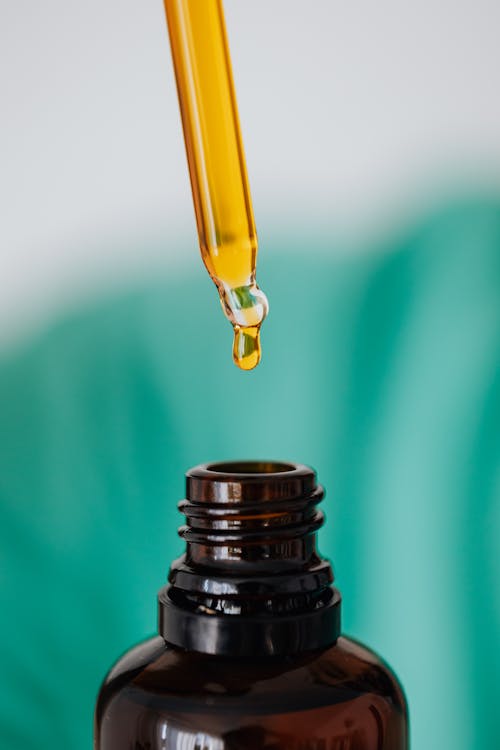
A picture of a stethoscope and medicine. Photo by Clker-Free-Vector-Images – Pixabay
Top 10 Incredible Facts about Edith Irby Jones
In the early 1930s, Edith Mae Irby was only about 7 years old when her older siblings got typhoid fever in their small house in Conway, Arkansas. Her brother, Robert, survived whilst her sister, Juanita, did not.
Edith could never get rid of the horrible feeling that Juanita had received subpar treatment since her family was poor. She remembered that a physician had only visited Juanita once during her ailment, preferring to attend to better-off typhoid patients living in the neighbourhood.
Edith made the decision at a young age to become a physician who would find fulfilment in service rather than income.
1.Edith was the very first black woman to join medical school in her state
Edith Irby Jones became the first black student to join racially diverse lessons in the South and the first black student to join the University of Arkansas School of Medicine in 1948, nine years before the “Little Rock Nine” incorporated Central High School in Little Rock, Arkansas. Her admission to an originally separate southern medical school received national attention.
2.A year after her sister’s death her family decided to move to Hot Springs
Edith managed to graduate from Langston High School in 1944. In Knoxville, Tennessee, she joined Knoxville College, a historically Black private college (see SEGREGATION and EDUCATION FOR AFRICAN AMERICANS). She was an associate of Delta Sigma Theta and the Alpha Kappa Mu Honor Society at the time. She joined summer graduate classes at Northwestern University in Evanston, Illinois, after graduating magna cum laude in the spring of 1948.
3.Edith had a hard time while in university due to her skin colour

Liquid medication with pipette in closeup. Photo by Karolina Grabowska – Pexels
Despite being admitted to the University of Arkansas School of Medicine, Edith Irby was not permitted to access the same dining, accommodation, or toilet facilities as those other classmates. Edith Irby, the daughter of a subsistence farmer and an unskilled labourer, was accustomed to adversity. She couldn’t walk for eighteen months when she was five because of ailment. Her father passed away in a traveling accident when she was eight years old. She later lost a sister and other close relatives to typhoid.
4. Irby’s classmates tried to support her to the best of their abilities
When Dr. Jones registered in 1948, there were 6,500 grad students in the United States, based on the University of Arkansas for Medical Sciences. 185 of them were black, with the majority attending historically black colleges. The board of supervisors decided to raise Dr. Jones’ class size by one, fearing that someone would whine and moan that she had obtained a seat from a white student.
She was forced to submit to Jim Crow degradations however, she recalls that her white peers frequently attempted to minimize them. They sat together with her at a racially divided university dining table and stood with her on buses during a time when blacks were compelled to surrender their seats to white passengers.
5.Edith had a great opportunity to work with Dr. Martin Luther King, Jr
She then did an internship at the University Hospital in Little Rock. Jones worked in hospitals in Arkansas and worked with Dr. Martin Luther King, Jr. in the Civil Rights Movement before moving to Texas with her family in 1958. Jones started her residency in general surgery at Baylor College of Medicine Affiliated Hospitals in 1959 however, the healthcare facility designated to her limited her patient assignments due to segregation.
6.Jones took part in her residency as a doctor in Texas
As part of her residency, Edith spent three months at Freedman’s Hospital at Howard University. She was motivated by two factors. One was that the residency staff members there thought about her rotating through Jefferson Davis Hospital at the time, because America still had discriminatory laws – laws that said fountains for drinking water were for coloured, for white.
Restrooms were labelled white and coloured. And they were concerned about her due diligence with those circumstances, so they prioritized not to rotate her through there. Meanwhile, she had met Doctor John B. Johnson, who was well-known in the profession of cardiovascular medicine at the time.
Matter of fact, she believes he was the first to perform an intravenous, or rather, inter-arterial, research of the heart. She questioned him if she could do a rotation at Freedman’s with Howard because she knew him from attending meetings with him. And, of course, he said yes, and she stayed at Howard for three months. However, it wasn’t the end of her rotation; it was somewhere in the middle of it. She returned to Houston and completed her residency there.
7.Dr. Jones broke so many boundaries as black woman during her time
Dr. Jones was the first female president of the National Medical Association, which was established for African American medical practitioners at a time when the American Medical Association was only accessible to whites. She travelled the world consulting on medical services, especially for the less fortunate families.
8.After years of segregation, Edith had an opportunity to launch her own private healthcare facility

Medical healthcare icons. Photo by Dapple-designers – Pixabay
In 1962, she established a private medical practice in Houston’s “third ward,” a section of the city’s inner core, to assist those who couldn’t get care elsewhere. The following year, she was appointed chief of cardiology at St. Elizabeth’s Hospital in Houston. She also rose to the position of associate chief of medicine at Riverside General Hospital.
She took a job as a Diagnostic Associate Professor at Baylor College of Medicine in 1963. Jones continued to study by attending graduate classes at the West Virginia College of Medicine in 1965 and the Cook County Graduate School of Medicine in Chicago in 1966.
Jones was voted into office as the National Medical Association’s second vice president in 1964. (NMA). She was the first woman to chair the NMA’s Council on Scientific Assembly in 1975, and she was voted into office the institution’s first female president a couple of years later. Jones was also a resident supervisor at the University of Texas Health Science Center.
9.Aside from helping her community tremendously with health care issues, she was devoted in other areas too
Jones has always shared her achievement, recalling her father’s initial teachings in providing help in her community. Jones established the Edith Irby Jones Foundation in addition to the Edith Irby Jones Healthcare Center in Houston, which offers numerous projects for underprivileged areas, to offer scholarship opportunities for those who, like her, aspire to be doctors but cannot afford medical school tuition.
She toured the Caribbean island nation of Haiti in 1986 as the chief of a United States Task Force on Health to identify the root causes and remedies to serious health issues. She not only founded a health clinic for underprivileged individuals as a consequence of that trip, in addition, she also set up the digging of many boreholes to supply desperately needed drinking water.
She also established and continues to fund urgent care health centers in Veracruz, Mexico and Uganda, Africa.
Jones has dedicated her effort to the problem of low cost housing in addition to her contributions in the area of health. She and her husband began a real estate company to purchase and remodel houses and then lease them out to poor families. The Joneses have also volunteered with Habitat for Humanity, a community-based organization that constructs cheap homes.
10.Jones has received countless of awards and recognition for all her efforts in the community
Jones received the Matrix Award for Medicine from the Houston Chapter of Theta Sigma Phi professional women in 1969.
The City of Houston declared Edith Irby Jones Day in 1986. The American Society of Internal Medicine named her Internist of the Year in 1988. She was a founding member of Houston’s Mercy Hospital and one of the Park Plaza Hospital’s 12 physician owners and developers.
Jones won various honours and accolades for her expert and volunteering activities all through her professional life, such as honorary doctorate degrees from Missouri Valley College (1988), Mary Holmes College (1989), Lindenwood College (1991), and Knoxville College (1992). (1992). In her homage, Memorial Hospital Southeast changed its name to its urgent care facility (1998).
She received the American College of Physicians’ 2001 Oscar E. Edwards Memorial Award for Volunteerism and Community Service, and she was enlisted into the University of Arkansas College of Medicine Hall of Fame (2004). Jones was shortlisted as a Local Legend for the National Library of Medicine by US Congresswoman Sheila Jackson Lee.
In 2015, she was inducted into the Arkansas Women’s Hall of Fame, and she earned a praise and appreciation from the Texas House of Representatives for her service in 2015. The Dr. Edith Irby Jones Clinic in Vaudreuil, Haiti, which she assisted in starting in 1991, and the Dr. Edith Irby Jones urgent care facility in Veracruz, Mexico, are both named in her admiration.

 English
English







